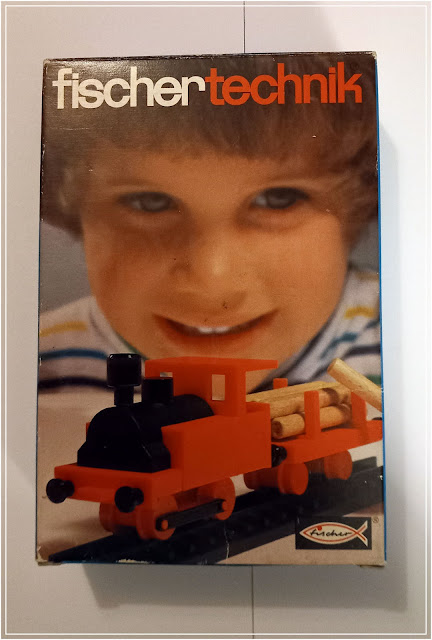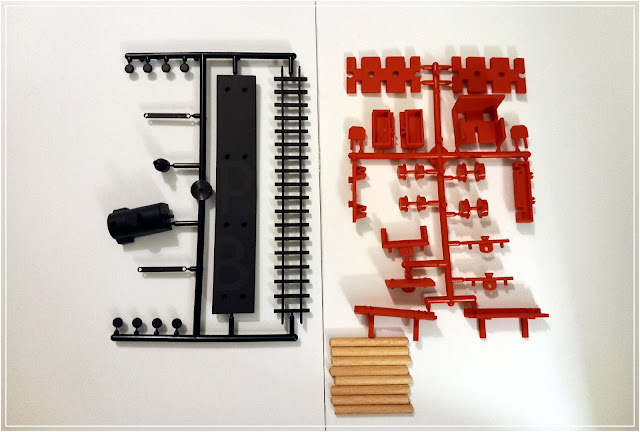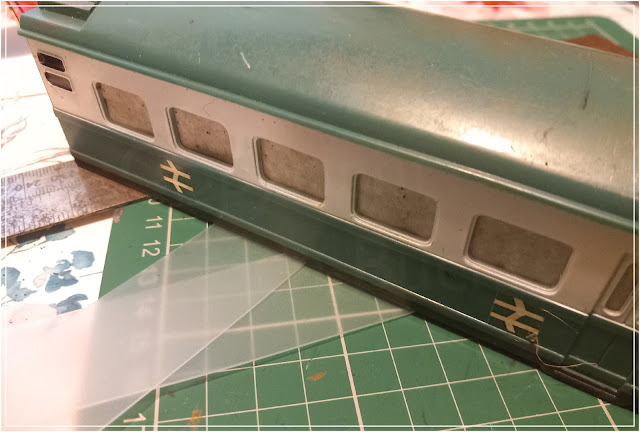Something I'm hoping to start as a regular feature for this year; the Monthly Minikit. Basically I'm forcing myself to do a model a month, no matter how busy I am with other projects, the Day Job, and other related matters. The only stipulations are that the kits should be around £10 or less. I've been doing this irregularly for a while, but I'm determined to stick to it being monthly from this year. So, to start 2024, something railway related, and quite vintage.
Good grief, that little West German child is quite sinister, isn't he?
From what I can work out, fischertechnik still exists today, making robust construction toys. They at one time produced a rather nice range of clip-together toy trains, which had an ingenious system of mounting a motor with electric pick-ups to run on HO track (and representing narrow-gauge prototypes). The trains seem to have been out of production for a while, but I spotted through eBay a few kits for a push-along version, and thought it would make a nice start for the year.
This is the kit, out of the box, with a nice little instruction leaflet.
The components. The quality of the moulding is lovely; just by nature of being produced in West Germany, this kit is at least 4 decades old, but there is no warping, and the quality of the plastic is lovely. The red plastic has a nice texture to it, and a chunky, solid quality. The black plastic is a little more flexible, but still decent quality, and there's minimal flash on the parts too.
I made the whole lot using just a craft knife and a file, the latter being barely required.
The components clipped together with a nice, solid feel. The chassis was nicely free-rolling; looking at some pics online of the larger, motorised trains, this smaller example seems to be very much a scaled-down version of those.
The completed locomotive; even though the instructions list it as N gauge, it's actually a HoE (narrow gauge) loco in terms of scale.
A single wagon was also included, a timber flat, of similar construction to the original.
It came with a short stretch of track on which to display it; these seemed a bit flexible, as individual components, but once they were clipped together, proved lovely and sturdy.
The only weak point, as far as I could find, was the slightly odd coupling, the chunky, chamfer-edged piece.
The log load in place; very nice dowels.
The completed train, with the catalogue showing the larger trains. It looks an interesting little range, and I know someone who collects them; probably not something I'll take up collecting, as the larger ones seem to have been a bit rare on our shores, and I don't really need any more trains to be going on with.
The finished model (on a length of proper N track); overall I'm very impressed with this train. The kit practically fell together, and it's a very nice little item for the shelf.
It being a logging locomotive, I thought I'd get some shots out in the woods near the house. This moss-covered log made for a nice set, looking vaguely like ferns.
Well, that's the first kit of the year, and a very nice little build it was too.










































































